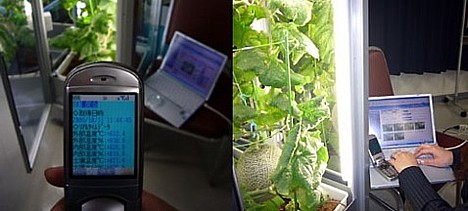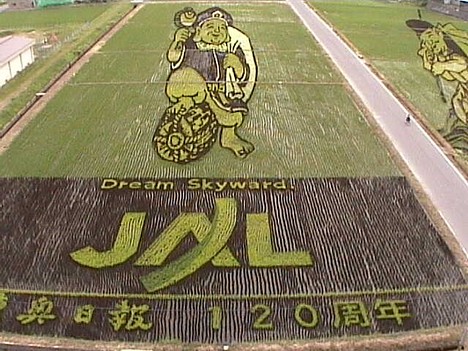
Has Japan Airlines' crop-based advertising gone too far? For some residents of Inakadate -- a small town with a big reputation for cultivating fantastic works of multi-colored rice paddy art -- the answer is "yes."
This year's crop art, which is Inakadate's 16th work since 1993, features giant images of Daikoku (god of wealth) and Ebisu (god of fishers and merchants) alongside the corporate logo for sponsor Japan Airlines (JAL). Here are a few photos of the rice paddy taken in June from the 6th-floor roof of the adjacent town hall.
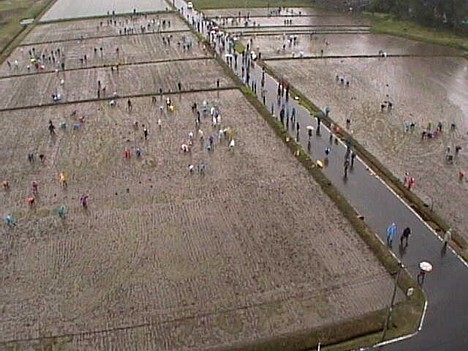
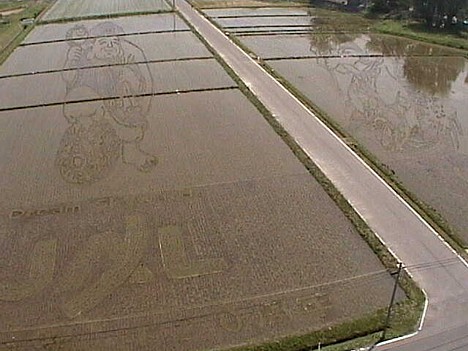
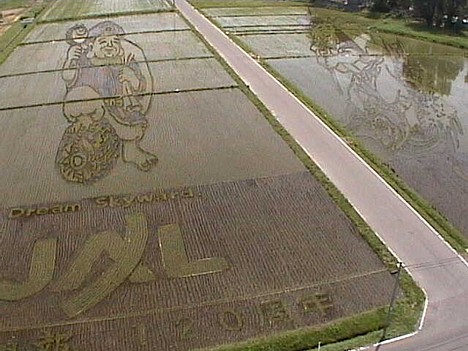
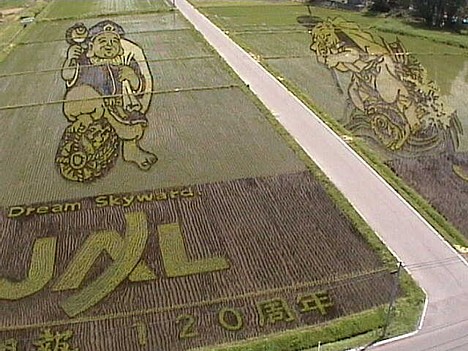

Daikoku (left), Ebisu (right) and JAL logo
The town committee responsible for the annual crop art project decided to incorporate advertising into this year's work to help offset rising costs associated with increased numbers of visitors. Last year more than 240,000 people came to see the crop art, and many of them used the town hall bathrooms and elevators (there is a nice view of the rice paddy from the roof), resulting in a costly utility bill.
However, the owner of the rice field, Ryuji Sato -- who also happens to be the former mayor of Inakadate and a member of the committee -- thinks the ad stinks. At the end of June he demanded the corporate logo be removed from his property.
"The idea has always been to create art that attracts lots of visitors and stimulates the economy," says Sato. "Turning it into a giant advertisement contradicts what we set out to do."
After a week of heated discussion, the committee voted to pull the ad, and on the morning of July 4, town hall employees were dispatched to the field to uproot the rice plants that make up the JAL logo. TV crews were on the scene. (Watch a Fuji TV news report.)
The video shows people removing rice plants only from the area occupied by the JAL symbol, which creates a very conspicuous negative space in the field. Ironically, this makes the logo more visible. It remains to be seen whether they can successfully remove all traces of the ad.
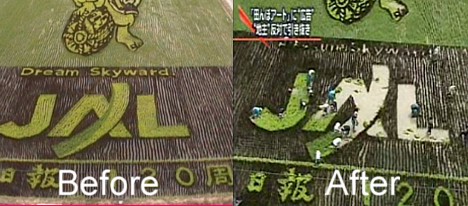
Town hall employees remove JAL logo
Sato's critics are skeptical of his motives. Because he is on the ballot for this autumn's upcoming mayoral election, some believe he is trying to draw attention to his candidacy. Others think he may be taking revenge for the bitter 2004 mayoral election loss that removed him from office. Sato dismisses the criticism, saying that if he really wanted revenge, he would not have allowed the art to be grown in his field in the first place.
"I just can't stand the fact that they are trying to turn this into a commercial venture," says Sato, who hopes to see the rice paddy art tradition continue as it has in the past.
Meanwhile, the Aomori-based marketing agency that coordinated the advertising agreement with JAL does not know what to make of the situation. A company spokesperson says, "We obtained the committee's approval and signed a formal agreement, but yet it has come to this. We are baffled."
[Sources: Inakadate Village, To-o Nippo]

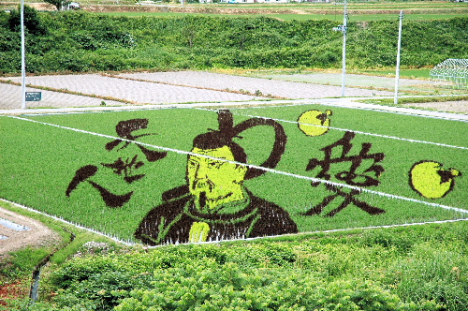
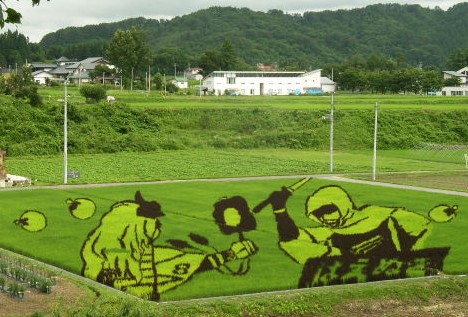
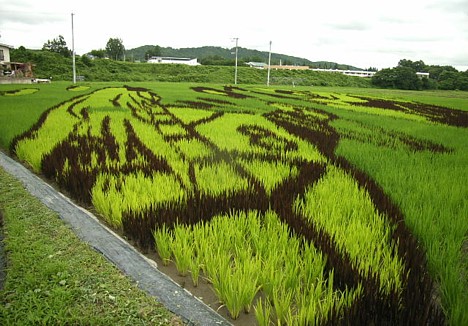
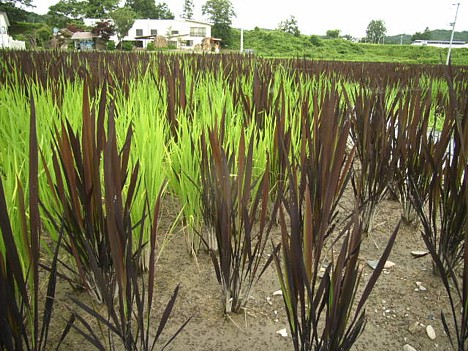
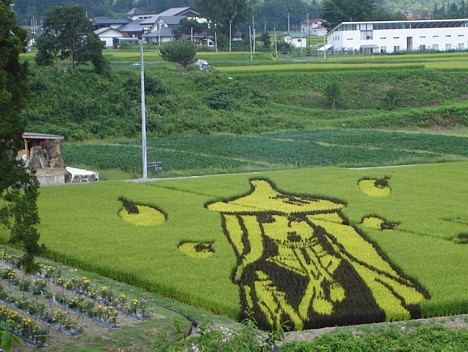

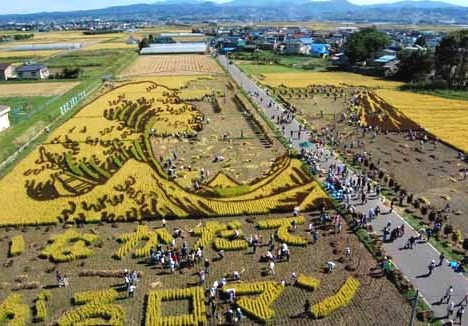
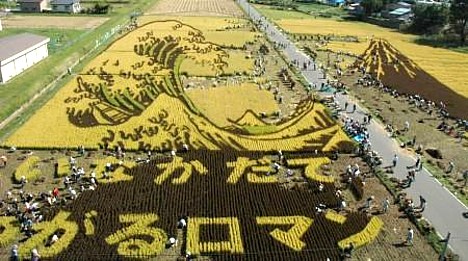
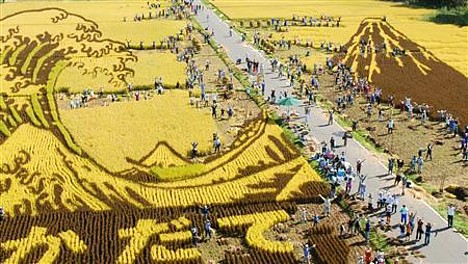
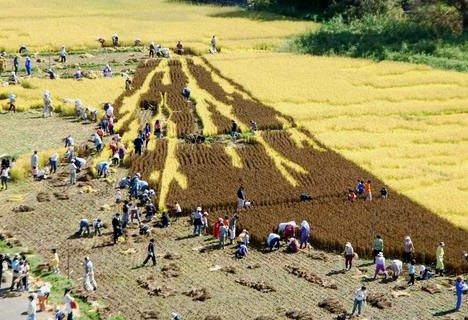
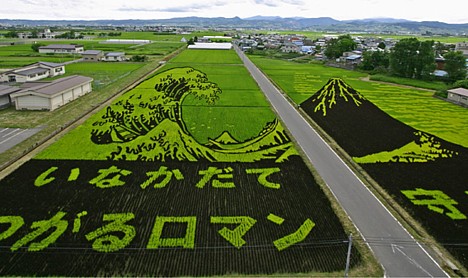

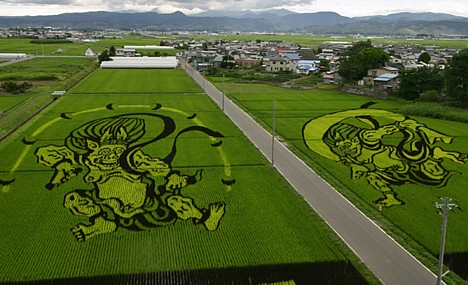
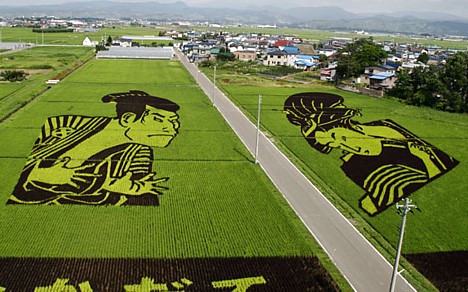
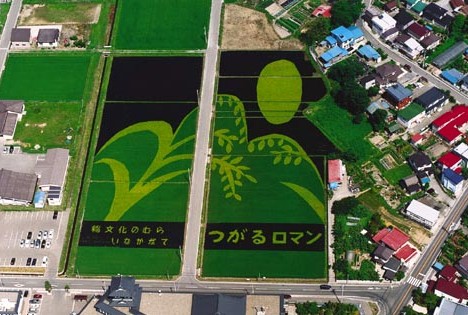
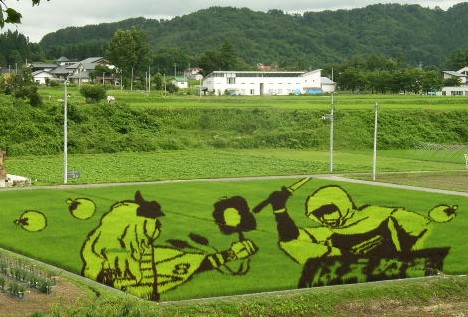
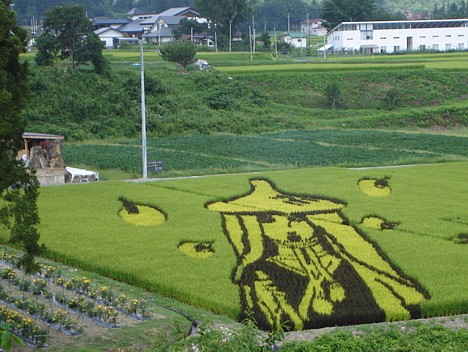

 On March 22, a group of Japanese scientists released details of an ambitious proposal calling for the large-scale production of bioethanol made from cultivated seaweed.
On March 22, a group of Japanese scientists released details of an ambitious proposal calling for the large-scale production of bioethanol made from cultivated seaweed.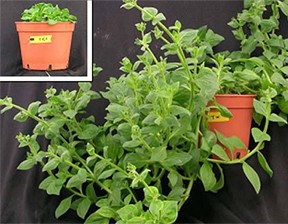 On January 18, researchers from Japan's Institute of Physical and Chemical Research (
On January 18, researchers from Japan's Institute of Physical and Chemical Research (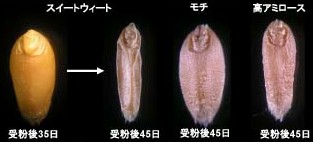 On December 12, researchers from Japan's National Agriculture and Food Research Organization (
On December 12, researchers from Japan's National Agriculture and Food Research Organization (